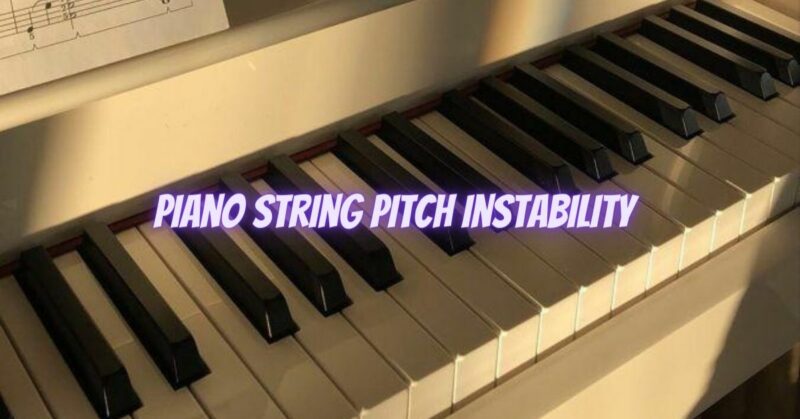Piano string pitch instability, commonly referred to as “going out of tune,” is a common issue that pianists encounter. Despite regular tuning, pianos can experience fluctuations in pitch due to various factors. Understanding the causes of pitch instability, its effects on the instrument and performance, and implementing appropriate solutions can help maintain a stable and well-tuned piano.
Causes of Piano String Pitch Instability:
- Environmental Changes: Changes in temperature and humidity are the primary culprits of piano string pitch instability. These fluctuations cause the piano’s wooden components to expand or contract, impacting the tension on the strings.
- String Age and Quality: As piano strings age, they can lose their elasticity and stability, leading to pitch fluctuations. Low-quality strings are also more prone to stretching and losing tension over time.
- String Stretching: New piano strings undergo a settling process where they stretch slightly during the first tunings. This initial stretching can cause temporary pitch instability until the strings stabilize.
- Piano Action Changes: Improper regulation of the piano action can affect the alignment of hammers and strings, leading to inconsistent striking points and pitch discrepancies.
Effects of Pitch Instability: Piano string pitch instability can have several adverse effects:
- Tonal Quality: An out-of-tune piano may produce unpleasant and dissonant sounds, affecting the overall tonal quality of the instrument.
- Performance Difficulty: For pianists, playing on an unstable piano can be challenging, as they struggle to maintain accurate pitch during performances.
- Artistic Expression: Unstable pitch can hinder pianists’ ability to convey emotions and musical nuances effectively.
- Ear Training: Inconsistencies in pitch can negatively impact a pianist’s ear training, as they may become accustomed to hearing inaccuracies.
Solutions to Maintain Stable Piano String Pitch:
- Regular Tuning: Schedule regular piano tunings with a qualified piano technician. Tuning at least twice a year is recommended, although more frequent tunings may be necessary for frequently used pianos or those in unstable environments.
- Climate Control: Maintain a stable environment around the piano by controlling temperature and humidity levels. Avoid exposing the piano to rapid climate changes.
- String Replacement: Replace old and worn-out strings with high-quality strings to ensure better pitch stability.
- Hammer Voicing: Properly voice the piano hammers to achieve consistent tone and volume, indirectly affecting the perception of pitch stability.
- String Stretching Procedures: During the first tunings of a new set of strings, technicians may perform “pitch raises” to help the strings settle and stabilize more quickly.
- Action Regulation: Properly regulate the piano action to ensure consistent striking points and accurate pitch production.
- Avoid Sudden Moves: When moving the piano, handle it carefully to avoid sudden jolts that may affect pitch stability.
Conclusion: Piano string pitch instability is a common challenge that can affect the overall performance and enjoyment of the instrument. By understanding the causes of pitch fluctuations and implementing appropriate solutions, pianists can maintain a stable and well-tuned piano. Regular tunings, climate control, proper maintenance, and qualified piano technicians are essential for addressing pitch instability and ensuring that the piano produces harmonically pleasing and accurate sounds. With proper care, pianists can enjoy the full potential of their instrument and create beautiful music for years to come.


